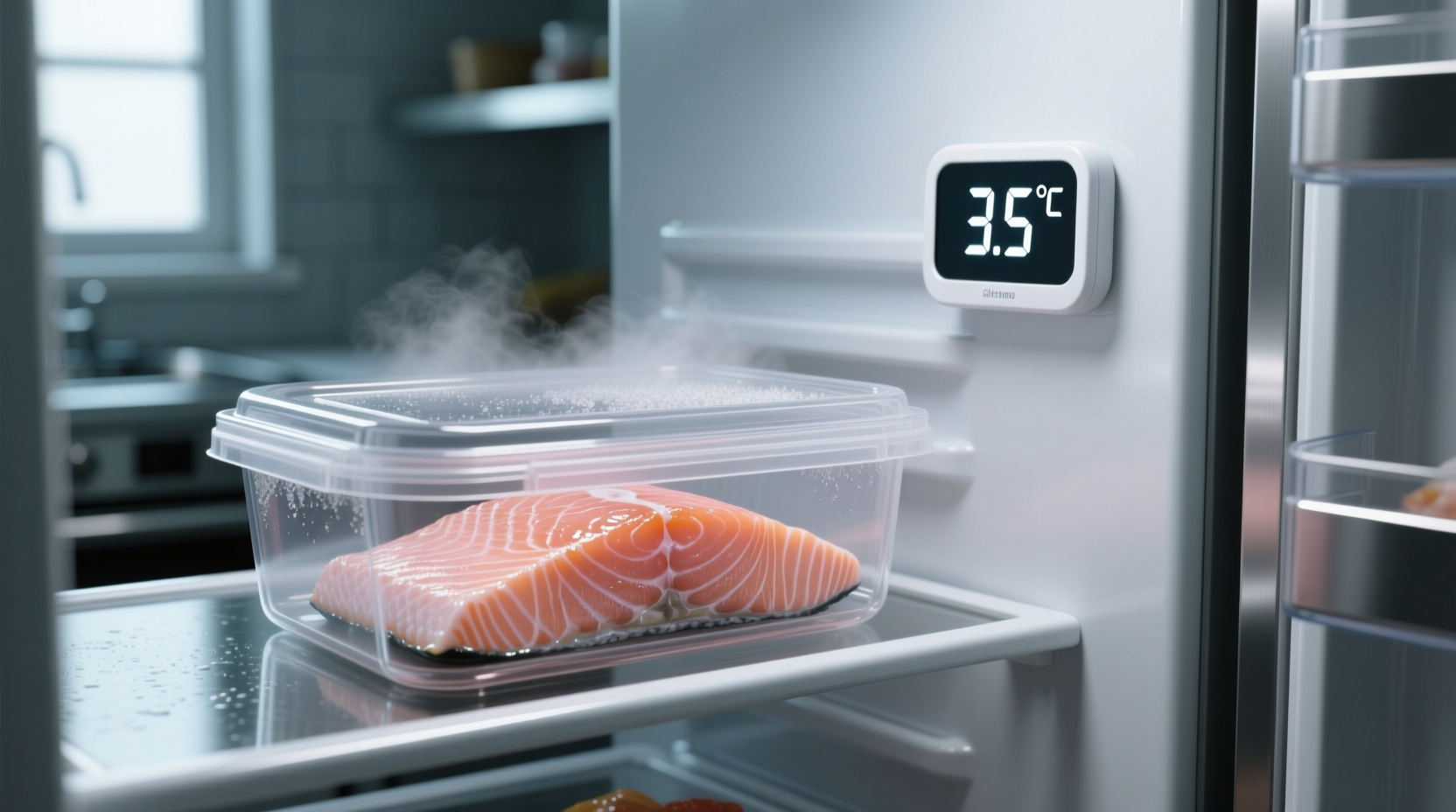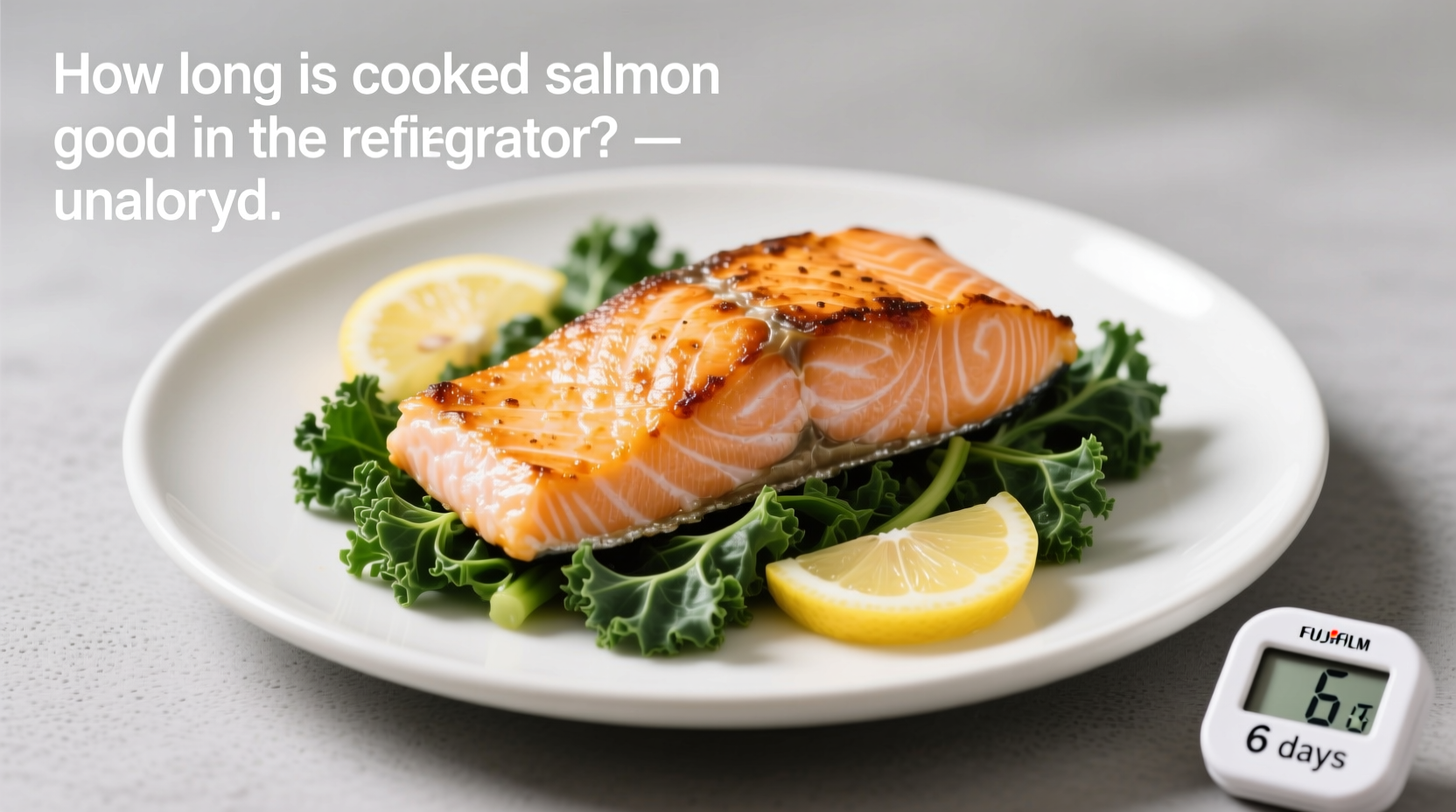Leftover salmon shouldn't become a food safety gamble. As someone who's worked in professional kitchens for over 15 years, I've seen too many people either waste perfectly good food or risk illness by guessing at storage times. Properly stored cooked salmon maintains both safety and quality for a specific window that depends on multiple factors beyond just the calendar.
Why the 3-4 Day Rule Matters for Cooked Salmon
Salmon's rich omega-3 content makes it particularly vulnerable to spoilage. Unlike leaner fish, its higher fat content accelerates oxidation when exposed to air and temperature fluctuations. The USDA's Food Safety and Inspection Service emphasizes that cooked fish falls into the "perishable" category requiring strict temperature control. When stored at proper refrigerator temperatures (40°F or below), bacterial growth slows but doesn't stop completely.
| Seafood Type | Refrigerator Storage (40°F or below) | Freezer Storage (0°F or below) |
|---|---|---|
| Cooked salmon | 3-4 days | 4-6 months |
| Cooked lean fish (cod, halibut) | 3-4 days | 4 months |
| Raw salmon | 1-2 days | 3-4 months |
| Smoked salmon | 5-7 days (unopened) | 2-3 weeks |
This comparison from the USDA Food Safety and Inspection Service shows why salmon requires special attention compared to other seafood. The higher fat content that makes salmon so nutritious also makes it spoil faster than leaner fish varieties.
Your Step-by-Step Guide to Maximizing Cooked Salmon Freshness
Immediate Cooling Process (First 2 Hours)
The clock starts ticking the moment your salmon finishes cooking. Follow these steps within two hours of cooking (one hour if your kitchen exceeds 90°F):
- Portion control: Divide large quantities into smaller containers to cool faster
- Airtight containers: Use glass or BPA-free plastic containers with tight seals
- Shallow storage: Keep portions no deeper than 2 inches for even cooling
- Temperature check: Verify your refrigerator maintains 40°F or below with an independent thermometer
Strategic Refrigerator Placement
Not all refrigerator spots provide equal protection. Store your salmon containers in the main compartment rather than the door, where temperature fluctuates most. The FDA Food Code specifies that the danger zone for food safety spans 40°F to 140°F, making consistent cold storage critical.

When the Clock Runs Shorter Than 4 Days
Certain conditions require you to shorten the standard 3-4 day window. According to research from FoodSafety.gov, these factors reduce cooked salmon's safe storage time:
- Sauce additions: Cream-based sauces accelerate spoilage (consume within 2 days)
- Cooking method: Grilled salmon lasts longer than poached due to reduced moisture content
- Initial freshness: Salmon that was near its expiration before cooking has reduced leftover shelf life
- Temperature breaches: Any time the salmon sits above 40°F for more than 30 minutes
Spotting Spoilage: Beyond the Calendar
Don't rely solely on the calendar. Your senses provide critical safety information. Discard cooked salmon showing any of these signs:
- Texture changes: Slimy film or excessive moisture pooling
- Odor indicators: Sour, ammonia-like, or overly fishy smell (fresh cooked salmon has mild ocean scent)
- Color shifts: Dull appearance or grayish tint rather than vibrant pink-orange
- Taste test: If it tastes sour or unpleasant (only test after confirming no visual/smell issues)
When in doubt, throw it out. The CDC reports that foodborne illness from spoiled seafood often causes severe gastrointestinal symptoms that aren't worth the risk of eating questionable leftovers.
Extending Your Salmon's Life: Freezing Guidelines
For longer storage, freezing preserves quality better than extended refrigeration:
- Prep before freezing: Place parchment between portions to prevent sticking
- Vacuum sealing: Removes air that causes freezer burn (extends quality to 6 months)
- Labeling: Note cooking date and type (e.g., "Maple-glazed salmon - Aug 15")
- Thawing method: Refrigerator thawing takes 12-24 hours but maintains safety
Reheating Leftover Salmon Safely
Proper reheating restores quality while ensuring safety:
- Oven method: 275°F for 15 minutes with a splash of broth to retain moisture
- Air fryer: 300°F for 8-10 minutes (prevents drying better than microwave)
- Never reheat multiple times: Each cycle through the danger zone increases risk
- Temperature check: Verify internal temperature reaches 145°F with a food thermometer
Avoid These Common Leftover Mistakes
Professional kitchens follow strict protocols that home cooks often overlook:
- Mistake: Leaving salmon on the counter to cool completely
Solution: Transfer to refrigerator within 2 hours of cooking - Mistake: Storing in original takeout containers
Solution: Use dedicated airtight containers designed for food storage - Mistake: Stacking warm containers in the refrigerator
Solution: Cool containers on counter first, then arrange with space between them
Practical Food Safety Timeline
Understanding the spoilage process helps you make informed decisions:
- Day 1: Peak quality and safety - ideal for consumption
- Day 2: Still excellent quality, minimal texture changes
- Day 3: Start checking for spoilage indicators before eating
- Day 4: Final safe day - inspect carefully before consumption
- Day 5+: High risk of spoilage - discard regardless of appearance
This timeline from university extension food safety programs shows why the fourth day represents the absolute limit for safe consumption. Bacterial growth follows an exponential curve, meaning risk increases dramatically after day four.
Maximizing Your Leftover Experience
Don't let safe storage practices compromise flavor. Properly stored salmon maintains quality for creative reuse:
- Add to salads with lemon vinaigrette (days 1-2)
- Flake into pasta dishes with fresh herbs (days 2-3)
- Create salmon cakes with minimal binder (days 2-3)
- Incorporate into grain bowls with roasted vegetables (days 1-3)
Remember that proper storage isn't just about safety - it preserves the delicate flavor and texture that makes salmon worth cooking in the first place. When you follow these guidelines, your leftovers perform as well as your initial meal.











 浙公网安备
33010002000092号
浙公网安备
33010002000092号 浙B2-20120091-4
浙B2-20120091-4